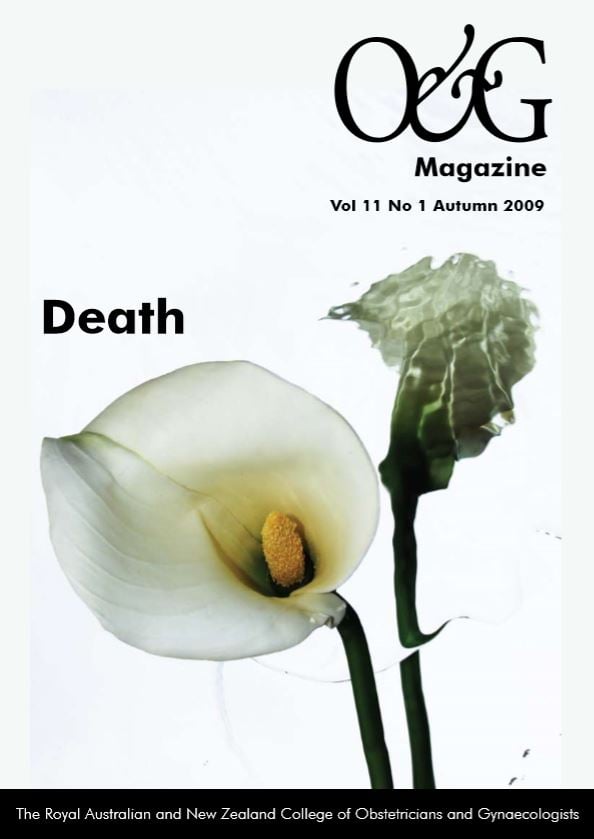The review of maternal deaths in New Zealand has had a chequered history. In the 1950s, there were reviews into specific conditions such as eclampsia and haemorrhage. From 1959, there was a review of maternal deaths undertaken by Professor Lawrence Wright. However, notification and detection of cases was a recognised problem. A more structured approach was developed over the next ten years. The Maternal Mortality Research Act 1968 gave a legal framework by establishing a Maternal Deaths Assessment Committee; secretarial support; a number of regional assessors; a requirement on practitioners to provide information; payment for practitioners supplying information; secrecy of information; and protection for those acting under the authority of the Act.
The committee was chaired by Professor Dennis Bonham and issued intermittent reports, including cumulative data on deaths from 1969, although it was known that year was incomplete. Indeed, a recurring matter raised by the committee was late or non-notification of cases. This delayed case review and, importantly, delayed the feedback to individual clinicians and health services. Reporting on this was seen as an important part of the committee’s work.
By 1990, the Maternal Deaths Assessment Committee had grown to include consumer input, as well as obstetric, pathology, anaesthetic, general practive and midwifery contributions. At one stage, a physician was co-opted. Professor Don Aickin took over as Chair in 1990. In a comment on deaths from 1986 to 1998, Professor Aickin reported (in 1993) that New Zealand had different definitions of maternal deaths and different denominators to Australia and the United Kingdom. New Zealand used mortalities within three months of pregnancy, while Australia and the United Kingdom included only deaths within six weeks of birth. In New Zealand, the denominator was total births, in Australia total confinements, and in the United Kingdom total maternities. Thus, comparisons could only be made with allowance for these differences. However, it appeared that rates of death in New Zealand in the mid 1980s were higher than in Australia and the United Kingdom, with changes in options in maternity care occurring as a result of midwifery practice. Professor Aickin drew attention to a decrease in the rate of direct obstetric deaths after the triennium 1975-7, but a rise in 1986-8, particularly sepsis. He concluded that ‘the current changes in provision of maternity services indicate a continuing need for careful analysis of outcomes’.
In addition to changes in maternity care, this was a time of ‘health reforms’. The review of maternal deaths was not a priority of the New Zealand Health Minister and the Ministry of the Health. A number of practitioners had been charged with manslaughter where death was involved. While eventually the Crimes Act was amended in this regard, the background inhibited reporting of cases. The last report of the committee was in May 1996, reporting on the triennium 1989-91. Thereafter the committee was in abeyance and although it was resurrected in 1999, it did not function, despite the best efforts of the by now combined Royal Australian and New Zealand College of Obstetricians and Gynaecologists.
Another decade, another political party leading the New Zealand Government and more legislation, this time the New Zealand Public Health and Disability Act 2000. A section enabled the Health Minister to appoint one or more mortality review committees. A schedule to the act contained provisions as to how they should function and only the Health Minister could authorise disclosure of information. The first mortality committee to be established was the Child and Youth Mortality Review Committee. A lengthy consultation process resulted in the formation of the Perinatal and Maternal Mortality Review Committee, which met for the first time in August 2005. Initial efforts were focused on establishing a system for reporting perinatal deaths and since 1 July 2006, information has been collected on nearly all perinatal deaths. All District Health Boards have local coordinators to review their own cases and report on classification of deaths. The committee established a Maternal Mortality Review Working Group which met in October 2006. With the appointment of a national coordinator and the network of local coordinators, work began on the systematic review of maternal deaths for the first time in many years. While the Ministry of Health had issued figures each year of known maternal deaths, there remained unease that the figures were incomplete and there had been no review of cases nationally. There remains the problem of late or non-notification. However, the cases are a tragedy for surviving families and for those providing care. The cases contain lessons for improving care and healthcare systems.
The Working Group has completed a review of cases for 2006 and most of 2007. A draft report has been completed and release is awaited shortly. Many people have an interest in the outcome. A Maternal Mental Health Workshop for professionals was held in October 2008.
From 2009, all death certificates will include a question about recent pregnancy. This should improve identification of cases.
There is a changing professional attitude to these sorts of inquiries. Although there are still potential consequences when there is a bad outcome, via the Health and Disability Commissioner, Health Practitioner Disciplinary processes, Medical Council competence review and other processes, the need to review cases is accepted. The Maternal Deaths Assessment Committee has a number of professionals providing time and staff to enable it to function.
Declaration
The author is a member of the Maternal Death Review Group. He was a regional assessor for the Maternal Deaths Assesssment Committee from 1990. He was invited to join the committee as an observer in 1999 but the committee did not meet after that.
References
- Wright JL. Maternal Deaths in New Zealand, 1959 (1966) NZ Med. J. 65; 744-48.
- Aickin DR. Maternal Mortality in New Zealand.(1993) NZ Med. J. 106; 375-6.






Leave a Reply